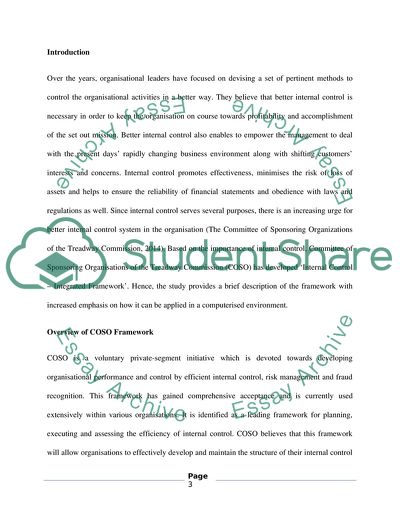Cite this document
(COSO model Essay Example | Topics and Well Written Essays - 2000 words, n.d.)
COSO model Essay Example | Topics and Well Written Essays - 2000 words. https://studentshare.org/finance-accounting/1833879-coso-model
COSO model Essay Example | Topics and Well Written Essays - 2000 words. https://studentshare.org/finance-accounting/1833879-coso-model
(COSO Model Essay Example | Topics and Well Written Essays - 2000 Words)
COSO Model Essay Example | Topics and Well Written Essays - 2000 Words. https://studentshare.org/finance-accounting/1833879-coso-model.
COSO Model Essay Example | Topics and Well Written Essays - 2000 Words. https://studentshare.org/finance-accounting/1833879-coso-model.
“COSO Model Essay Example | Topics and Well Written Essays - 2000 Words”. https://studentshare.org/finance-accounting/1833879-coso-model.


